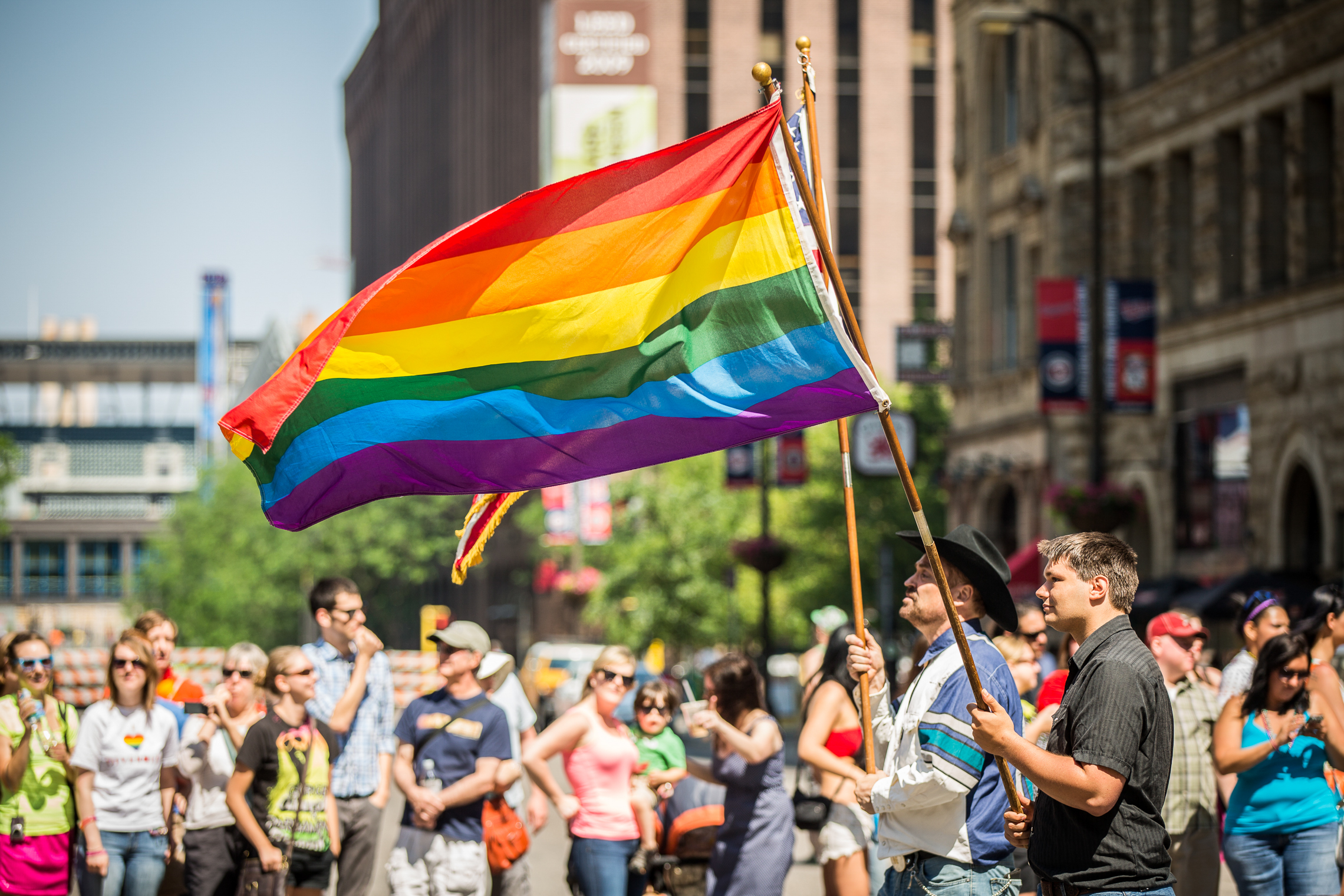Sexual education in the United States is taught almost entirely within an exclusively heterosexual framework, leaving LGBTQ+ students unable to see their identities and experiences reflected in the curricula. Some public schools even promote blatant prejudice: In Alabama, public school teachers are mandated by law to teach that “homosexuality is not a lifestyle acceptable to the general public.” Similar laws, dubbed “no promo homo,” currently operate in six other states, outlawing teachers from portraying LGBTQ+ people or topics in a positive light. Some of these states even require that such individuals be portrayed negatively. And other parts of the country that don’t conspicuously prevent inclusive dialogue still use sexual education curricula devoid of non-heteronormative and non-cisnormative language, validation of sexually fluid behavior, or an emphasis on inclusive safe sex practices.
Such a lack of inclusion harms a population that already faces disproportionate health risks. Sexual education plays an essential role in teaching students about harm and risk reduction through birth control methods, protection, consent, decision making, and healthy relationships, particularly for those who do not have the luxury of communicating comfortably with their parents on these topics. Yet fewer than 6 percent of LGBTQ+ students report exposure to positive representations of these topics in their sexual education classes. The failure of policymakers and schools to promote inclusive dialogue in sexual education courses is an attempt to delegitimize the existence of LGBTQ+ youth. This places these students’ physical and emotional health in danger by denying them both the right to basic information about STI prevention and a classroom environment free from stigma.
Within the past few months, state legislators have attempted to further restrict dialogue about sexual orientation and gender identity in schools. This January, the Indiana Legislature proposed Senate Bill 65, which would prevent teachers from discussing gender identity during sex education without explicitly receiving written parental consent, essentially barring students from learning about LGBTQ+ issues unless their parents agree to opt-in. Similarly, in February, South Dakota state Senator Phil Jensen proposed Senate Bill 160, which also attempted to ban teaching gender identity or gender expression to students in elementary and middle schools. Although SB 65 was amended to remove its discriminatory language and SB 160 was blocked, the two bills reveal politicians’ ignorance of—or indifference to—the damage their actions would inflict on many young people.
Making sexual education policy more inclusive would have far-reaching benefits. According to a 2016 study published in the Archives of Sexual Behavior, nearly 9 percent of American adults have had at least one same-sex experience. A recent survey of sexually-active high school girls in New York City suggests the number may be on the rise, finding that almost 1 in 4 respondents reported some same-sex experience. Given the significant adolescent population with these experiences, exclusionary sex education policies possibly put hundreds of thousands of students at risk. In addition to invalidating LGBTQ+ identities, “no promo homo” laws gloss over critical health and safety information, such as forms of protection and lessons in consent for non-heterosexual and non-cisgender students. Some curricula overtly demonize LGBTQ+ youth, equating homosexuality with child sexual abuse, insinuating gay men caused the AIDS epidemic, or only discussing same-sex sexual activity in the context of promiscuous or risky behavior. Unsurprisingly, schools that teach such beliefs also report higher rates of LGBTQ+ youth skipping school, a lack of inclusive health services, and few comprehensive anti-bullying policies. By attempting to erase and even vilify the presence of LGBTQ+ youth, these practices reinforce a hostile environment for these children and adolescents, leaving them more susceptible to bullying, stigma, and homophobic remarks.
Addressing these issues through an affirmative and comprehensive sex education curriculum becomes imperative when considering the vulnerable position of LGBTQ+ youth. Compared to their heterosexual peers, they experience higher rates of STIs, unintended teen pregnancies, depression, partner violence, and substance use. The US healthcare system also has a history of discrimination against LGBTQ+ populations, evidenced by cases of hospital staff refusing to provide HIV medication to men who have sex with men and point-blank refusal to serve transgender patients.
Research confirms that affirming and validating conversations about sexual and gender fluidity are the first step in reducing the societal pressures that lead to depression, suicide, and substance abuse. This entails lessons on gender and sexuality that explain various LGBTQ+ identities, consent, and protection in the context of non-heterosexual and non-cis relationships, and on sexual experiences beyond strictly binary terms such as “man and woman,” “penis and vagina.” As more students identify as LGBTQ+, far too many schools still neglect the consequences of poor sexual education policy. Topics of gender identity and sexual orientation are still taboo in many American classrooms, a reality that reinforces how the US needs to heighten its dialogue on the ways it continually fails to acknowledge the LGBTQ+ community.
